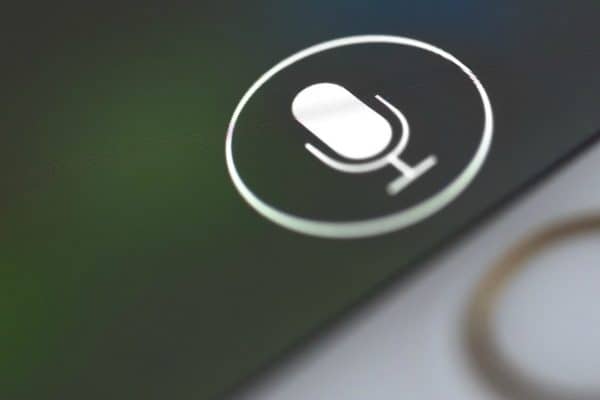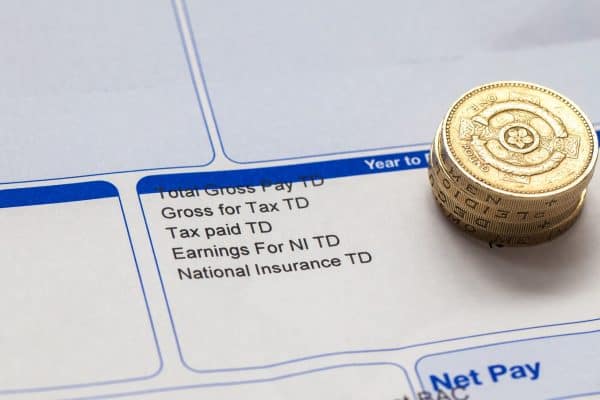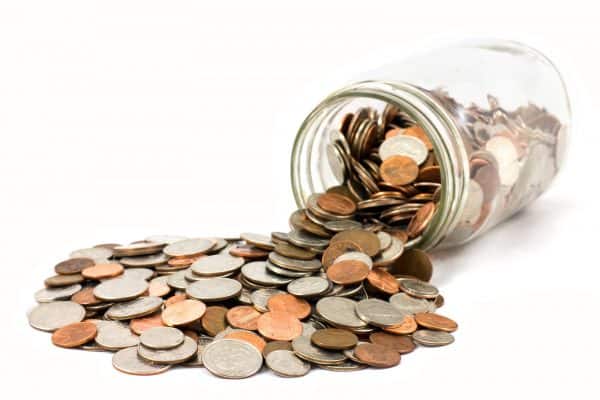In today’s consumer-driven society, it’s all too easy to get caught up in a cycle of spending. From online shopping to impulse purchases, our wallets often feel the strain of our spending habits. And with credit cards, subscriptions and more, it can be easy to end up overspending each month, which can lead to a lot of stress and even affect your credit score. However, with a bit of discipline and conscious decision-making, it is entirely possible to break free from this cycle and take control of your finances.
Here we’ll go through some easy changes you can make to your monthly spending to regain control. Whether you want to clear your debt, save for a house, or even have the ability to put some money aside for retirement, the first step is to manage how much you spend.
Avoid overspending each month with our simple tips:
1. Discover WHY You Overspend
If you are consistently overspending, there’s probably a reason which will link to what sort of shopper you are. Are you an impulse buyer that buys what you want when you want? Or maybe you’re an emotional buyer who loves the rush of buying something new. Maybe pop-up ads are your weakness, where it takes just a simple click to purchase, known as convenience buyers. Or are you a discount shopper who buys items simply because they are a bargain rather than actually needing them?
Once you know why you can’t stop buying, you become more aware of when it is happening. This awareness can be a big help to stopping spending money.
2.Track your Spending and Create a Budget
You can only gain control of your spending if you know what you are spending your money on. So get all your recent statements and receipts and see what you’ve been spending. You can use an app for this, a spreadsheet, or go old-fashioned with pen and paper. You can do this for just a month, but if you look over your spending for a few months, you’ll get a better view of your spending. Include incomes to help you see how much you are overspending.
Divide your expenses into categories once you have all your recent spending. These should be things like groceries, housing, cars, clothing, eating out, subscriptions, etc. You might be shocked at how much all those takeaways add up to each month!
Next, figure out which expenditures are a want and which are a need. Needs are what you can’t live without, like food, utilities, and housing, and wants are luxury items, like new clothes, a holiday, takeaways etc.
Use these needs and wants to create a budget. Look at how much comes in every month and prioritise your needs. If you cut all the wants, would you be overspending? Use this to prioritise your monthly money spending, ensure your needs are covered every month and stick to it. Also, consider how much you want to save every month, and add this to your budget if possible. Keep track of your spending in relation to your budget; this way, you’ll see when you’ve done well with your spending and when you have overspent. It’s a good habit to get into, even if you don’t overspend.
Learn more about budgeting in our budgeting basics post.
3. Get Rid of Subscriptions
When it comes to deciding if something is a want or a need, be tough and honest with yourself, especially when it comes to subscriptions. First, look at subscriptions you don’t really use anymore – these are a complete waste of money! If you’re overspending, even subscriptions that you do use might have to be sacrificed. Would it really hurt to stop the Spotify subscription and listen to the ads? Or why not look for free ways to get fit, like running, rather than having a gym subscription? Can you reduce your phone subscription? You could also look for subscriptions you can share with friends or family to cut costs if you don’t want to get rid of some completely.
If you need more convincing to get rid of your subscriptions, find out what you could save in our post on why you should cancel your subscriptions.
4. Meal Plan

You need food; that’s a given. But are you overspending on food? It’s easily done! And to combat this, meal planning is the solution. Plan your meals for the week, make a list of what you need and stick to this when you shop. Also, never go shopping when you’re hungry!
When planning your meals, think about batch cooking. This is a great way to cut monthly costs. Make plenty of freezable meals, so when you can’t be bothered or don’t have the time to cook, you can get a nice, homemade freezer meal rather than ordering a takeaway. It’s not only better for your wallet, but it’s better for you too. You can also take some of these freezer meals to work for lunch, stopping you from nipping out every day and spending money on convenience food. We have some batch cooking ideas for you to try.
You could even go one step further and eat seasonally. Find out how eating in season is good for you and your wallet.
5. Leave Cards at Home
When you go out, especially when shopping, only take the cash you want to spend with you. Don’t take your cards with you; that way, even if you want to get out some more cash or buy a treat, you can’t. It removes all temptation. With cash, you know exactly how much you are spending, and seeing the cash dwindle as you spend it can help you to think about your purchases. It’s too easy to tap the card and not see the consequences until later, but it has a different effect when you have to break a note and hand the money over.
6. Think About Costs as Work Time
When you get tempted by a purchase, think about how long it would take you to earn the money you are about to spend. So, if you earn £10 an hour and are looking to buy something for £200, it would take you 20 hours to earn that money – is what you are buying worth 20 hours?
7. Give Yourself Pocket Money

Having separate accounts can help with cutting spending. Have one account for all your needs, such as utilities, rent/mortgage etc., and ensure you have enough in there every month to cover your bills. Then, have a separate account to put in some “pocket money”. Put a limited amount into your pocket money account every month, and only allow yourself to spend that amount on treats and luxuries as a maximum.
8. Reduce Your Bills
Recurring bills, especially those you can’t live without, will likely make up a large proportion of your outgoings, so reducing these will give you more money every month. Even making little changes can help. Make sure you turn off appliances when not in use, switch to energy-saving light bulbs, air dry clothes instead of a dryer, and maybe see if you can reduce your phone bill.
9. Have “No-Spend Days”
Once or twice a week, challenge yourself to spend nothing (other than budgeted-for things). If you’re in the habit of spending, sometimes just breaking the cycle by having no-spend days can reduce your impulse buying.
No-spend days will also help you to see that you don’t have to spend money to have fun! Browse our no-spend weekend ideas for inspiration.
10. Freecycle
If you really do need to replace something, check out sites like Freecycle to see if you can find something suitable for free. This helps your wallet and reduces waste, so it is good for the planet too. If it’s the rush of getting something new that causes you to spend money, getting something for free might allow you to get that rush without parting with your money too.
11. Reuse

Another way to help the planet and stop your spending is to reuse what you have. Buy a reusable water bottle to ensure you have hydration when out and about, so you don’t have to buy a bottle of water. Reusable coffee cups can offer the same solution.
You can also get creative here. Instead of replacing an item, can you fix it? Or, can you repurpose it if it can no longer be used for its original purpose? For example, old drawers can be used as under-the-bed storage. Empty wine bottles can make flower pots or candle holders. Old, chipped mugs can work as garden planters. The possibilities are endless!
If you love treating yourself to clothes too often, you can even resell or buy second-hand clothes. Through apps, you can sell what you don’t use anymore, which can help get back any lost funds. Or buying second-hand through apps or charity shops can help give you the thrill of buying at a lesser price.
12. Remove Temptation
If you find yourself bombarded with ads on social media, or have signed up for newsletters for your favourite treats, remove these from your life. Ads are designed to make you buy, so if you struggle to ignore ads and end up purchasing, as it’s so easy to click, you need to remove these temptations. You might be surprised at how much social media affects your spending.
Either stay off social media or limit your exposure. Remove notifications from your phone if you struggle to stay off social media. Unfollow accounts that might entice you to spend too. Unsubscribe to newsletters that might tempt you with special offers. The more temptation you can remove, the less likely you are to spend.
13. Start a New (Free) Hobby
Distracting yourself with a new hobby is a great way to reduce your spending, as you have something else to focus on. You could start volunteering, maybe take up running, or use a free app to learn a new language. The Open University even has free courses you could enrol in.
You could spend time learning a new skill. This could help you start a side business or even help you progress in your current job. Here are our favourite ways to learn a new skill for free.
14. Build a Support System
Share your financial goals with friends and family that can support you and hold you accountable. That way, they’ll know to avoid organising days out that involve lots of spending. Trying to make big changes on your own can be tough, so having a support network can be a big help.
You can also join online communities or forums for support. These are great places to find ideas, tips and even success stories.
15. Stick to It
No matter how you cut down your spending, you need to stick to it. This is often the hardest part but is the most important. You need to be very clinical when assessing your spending habits and think about what is actually achievable for you when it comes to spending. Then you need to be strict with yourself and keep to your budget.
For more help on controlling your finances, check out our other posts on budgeting.



















